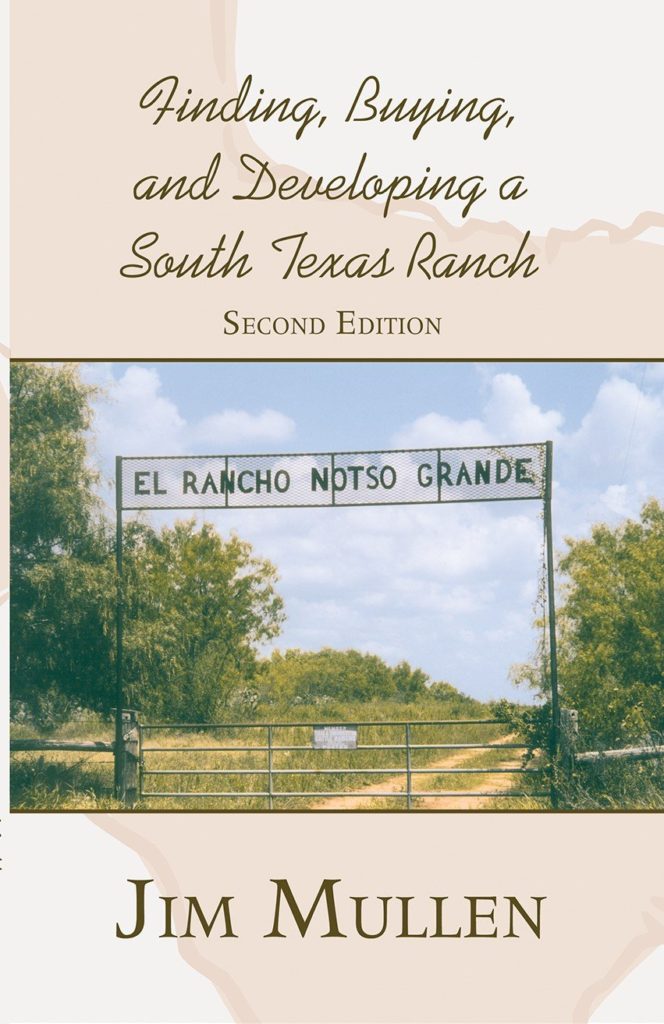After an exhaustive search, you’ve found a ranch located in the area you want, priced no more than 20% above your purchase limit, and has the soils, vegetation, and improvements that you desire. More importantly, you “like” this ranch. It is time to buy the place and get on with enjoying it.
The Farm and Ranch Contract is 9+ pages of important information and conditions critical to the smooth transition of ownership of a ranch. As it changes on a regular basis, I will not reproduce it here, but trust that you have a Broker representing you that will point out the important issues as they arise. Again, your Broker is NOT an attorney, and as this is a legal document, you should have it reviewed by an attorney BEFORE you submit your first offer.
The Purchase Price. What are the important points in a farm and ranch contract and how should you start? First of all is the price. As mentioned earlier, the asking price is rarely the taking price; there is always some room for negotiation, if not in actual dollars, then in minerals, access, equipment, or financing. Assuming the asking is reflective of the market, meaning it is based on comparable sales plus some margin for negotiation, you should initially offer at least 85% of the asking. Now, a lot of the time, the asking price is market plus 20% or 30% and offering 80% of that would result in your over-paying for the ranch. This is an area where your Broker should earn his pay. Your Broker should have knowledge of the market in the region of the ranch and should be able to advise you as to the validity of the asking. Your Broker should also have a feel for the amount of leeway in the asking price. You really don’t want to sour the deal by offering a price that is ridiculously low. This really can insult the Seller and taint the whole deal, even kill it outright. As long as you feel the asking is fair, offering 85% of that is a good starting offer.
A Seller’s options are to accept your offer, counter your offer somewhere between his asking and your offer, or reject it. Any way he responds, you’ll learn something about his thinking.
If the Seller accepts your offer, move on and don’t “second-guess” your offer. A lot of time, people buy places and anguish over the price after the fact. Do your homework, make the offer you can live with and move on. If the Seller rejects your offer, you have the option of raising the bid incrementally until you reach an agreed price or you hit your limit. If the Seller counters, the fun begins. A counter means you have the Seller’s attention and have a chance to buy the ranch. Do not make a common mistake by always going halfway between the counter and your offer. If you feel the counter is still way too high, just come up a little. If the counter is fairly close to what you expect to pay, raise your offer most of the way to show good faith, reserving some cushion for further negotiations. If you hit an impasse on price, look for options in equipment, minerals, and payment terms, etc. that make the deal better for you without running the Seller off.
What if the asking is far above what the ranch is worth? Sometimes the Seller is not well served by his Broker or decides himself what he wants/needs to get for the ranch. In those cases, if the market and the property simply do not justify the asking price, offer 90% of what you think it is worth. It may well sour the deal, but it may buy you a ranch if the Seller has not had any other offers and realizes that the market simply does not support his price. If a property is over-priced, you can sometimes make your offer and let it “sit”. This serves to let the Seller know you want the place, at your price. Certainly, clear this with your attorney, but I don’t like open ended offers. Put an end date on any offer, no matter how low, so there is a date after which the offer is withdrawn.
Earnest Money. Earnest money is part of the negotiations. In principle, the purpose of this money is to offset out of pocket expenses incurred by the Seller prior to closing in the event the sale does not close; normally the cost of the survey plus the title policy. The money is not paid to the Seller unless the deal fails to close due to something the Buyer does or does not do. Should the deal not close due to actions on the part of the Seller, the earnest money is returned to the Buyer. It has always served the purpose of showing good faith or the “earnest intent” of the Buyer as well. Because there is a chance the Seller will get the money if the buyer fails to close the deal, a large offering of earnest money serves to make the Seller feel more confident about your intentions. On a $1 million deal, an offer of $25,000 is acceptable, $50,000 is better.
Survey and Title Policy. As mentioned above, cost of the survey and title policy is normally a cost paid by the Seller, but who pays these costs is fully negotiable. A new survey is recommended if the current survey is more than five years old or if significant work has been done on perimeter fencing. Certainly, a new survey is indicated if the tract is being cut out of a larger tract or combining two or more tracts. Surveys are getting much more accurate, but because of new requirements put on surveyors by the State, to make the new survey reflect all the adjoining surveys, they take more time to do. Field work used to take two weeks and office work another week. Now, with GPS, field work takes a day, but office work takes a month. Providing the surveyor with the previous survey, deeds, and the farm and ranch contract will speed things up. It also helps if a copy of the title commitment is provided to the surveyor when it becomes available. However, as the surveyor now must check that his survey matches all surrounding surveys, allow at least 30 days for the survey. This is normally how the date for closing is arrived at; 30 days to make a new survey and 15 more for the Buyer/Seller to review the survey.
The title policy is very important and money well spent. While I have never heard of someone contesting title after a purchase, it could happen and the title company is supposed to provide insurance to the Buyer to protect him/her from that. In truth, the real value of getting a title policy is the title commitment. This is a document that the title company issues to all parties that reflects all instruments of record that might affect the title to the subject property. Old oil leases, mineral divisions and reservations, easements, mortgages, etc. are all researched by the title company and set out in the title commitment. This is an excellent example of spending a little to save a lot. Be sure to provide the title commitment to your attorney for his review. Objecting to issues in the title commitment is a favorite pastime of real estate attorneys but important to the Buyer. Because some of these issues can be easily removed at this time, it is a great opportunity to “clean up” the title. It is also your last time to learn if there are any serious restrictions to your use of the land. Mineral rights are mentioned as recorded reservations and leases but are not insured and not really well delineated. It will take a mineral search and an attorney to determine what mineral rights you will really receive at closing. This in itself is enough reason to ask for a title policy. When minerals are important or if your new ranch is in a mineral-active area, it might be a good idea to have a mineral search done at your expense. As mentioned, with the new O/G activity in Texas, landmen are more prevalent and more reasonable. Within a week you will know who owns what and what activity the ranch has seen over the years.
Another real service the title company provides is the preparation of the documents required for the transfer of ownership. Usually the title company prepares the deed, the mortgage, and the closing statement, which outlines who paid what in the closing. They also actually “close” the deal; making sure all parties sign what needs to be signed and that funds are properly distributed. Closings are complex, tedious chores and you should come to appreciate your closer.
Minerals. While on the subject, what minerals do you ask for? Initially, the minerals offered should have been outlined in the prospectus. If, as is often the case, the percent of the mineral estate to be conveyed to the Buyer is “negotiable”, ask for all owned minerals as this is a negotiable item. Do not expect a low price and all the minerals unless the Seller is very motivated but start out by asking for all and negotiate down if given the chance.
If owning some portion of the mineral estate is critical to you, state specifically that you will receive some portion of the minerals. Do not ask for “half of all owned minerals” because if it turns out the Seller doesn’t own any, you get half of nothing. No, state specifically that you will receive “one-half” or “one-fourth” or “ten percent” of 100% of the mineral estate. Then, if the Seller owns less then he thought, you have leverage and an out, if you choose to exercise it. If the Seller offers a portion of the minerals, spell out that offering in the mineral addendum to the contract so the deed will reflect it. Never assume that the Seller really understands what minerals he owns. As discussed earlier, the mineral estate can be divided into five separate rights. A Seller may think he has all the minerals when in fact, he only owns all the executive rights or all the royalty rights. Make everyone concerned be specific and ask questions, addressing all parts of the mineral estate. Like minerals, water rights and now wind rights can be important. Ask for 100% of both.
Other Conveyances. In addition to the land and the fixed improvements, oftentimes equipment is conveyed as part of the deal. Tractors, deer blinds and feeders, camping trailers, even windmills sometimes disappear between the agreement and closing. Anything you think you’re getting as part of the ranch should be listed somewhere in the contract, even if you have to add an addendum. A very smart client of mine, when he was selling his ranch, refused to include any equipment in the negotiations. His opinion, which is now mine as well, was if you include equipment in with the land, you do not get any value for it. Conversely, if you are the Buyer, unless specifically asked not to, ask for all the rolling stock, all the farm equipment, all the blinds and feeders, certainly all the water systems, gates, and furniture. Assuming you’ve made a reasonable offer, the worst thing that can happen is the Seller will cross it out.
Addendums. Both the Texas Real Estate Commission and the Texas Association of Realtors have promulgated addendums which can be added to the basic contract. Ask your Broker for a list of the addendums to see if any apply to your deal. At a minimum, I always include the environmental addendum which gives the Buyer the right to have inspectors study the property for toxic substances, endangered species, or wetlands. A basic assessment, called a Phase 1 Environmental Inspection, should run about $2,500 and is a good investment on any property that has a history of intensive farming (banned chemicals), oil and gas production, or might have either endangered species or wetlands. Other addendums often found in farm and ranch contracts include Seller Financing, Property Condition (when the housing is a significant part of the price), and the addendum concerning lead based paint (for homes built before 1972).
Miscellaneous Items to Consider. In the excitement of buying or selling a ranch, sometimes things get overlooked that lead to conflict. It is possible, and far better, to get these things spelled out early on, preferably in the contract. The first is access prior to closing. The Seller often has a lot of work to do before closing, moving cattle or equipment, and he may be sentimental about selling the place. On the other hand, the Buyer is anxious to get to know his new ranch and start making improvements. Therein lies a potential wreck. Access to the ranch prior to closing should be set forth in the contract and include provisions for inspections as well as tours by the Buyer. If this period occurs during the hunting season, it is normal for the Buyer’s access to be limited to weekdays and it is normal to require the Buyer to notify the Seller when he wants access. But the issue should be addressed and in writing.
Hunting and grazing leases are also potential problems. I am in the process of closing a ranch that is leased through the hunting season and, while closing is set for after the season, Buyer access may cause a problem with the hunters. For now, visits to the ranch by the Buyer are limited to Monday thru Thursday, 10 AM to 3 PM. Grazing leases are simpler and usually end with closing. However, since no one wants to move their cows until it is certain that the ranch is sold, they are usually given 30-60 days after closing to remove their livestock. Likewise, since the Seller really doesn’t want to move out until the place is sold, there is usually a similar period of grace for him/her to remove personal effects. Lastly, if the Seller is involved in any government programs such as the Conservation Reserve Program, he must notify the proper governmental agencies that he is selling the property. The Seller should also be directed in the contract to provide the Buyer with copies of all government agreements and leases, anything that will survive closing.
The Option Period. While on the subject of access after the deal is made, a relatively new clause in the Farm and Ranch Contract is the Option Period. This is a period of time, fully negotiable, that gives the Buyer a “free look” for a non-refundable fee. During this period, the Buyer usually has unlimited access to the property for himself and his agents/inspectors with notification to the Seller or his agent. This period is when you can do the Phase I, dig potential pond sites, census deer, etc. As written, the Buyer can walk away from the deal for any reason during this period. If the fault is something the Seller can remedy, he can do so, but is not obligated to do so. Likewise, the Buyer has no obligation to explain his decision to walk away. Option periods are usually for two weeks and usually can be established for ½ of 1% of the purchase price.






